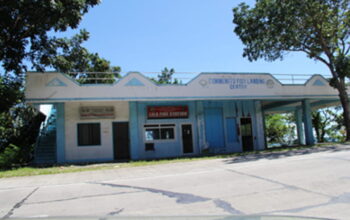WHILE Boholanos were made to believe that most of its power supply came from the clean energy source of the 700 megawatt Tongonan geothermal power plant in Leyte, Bohol’s leading power distribution cooperative negates it.
In its official statement posted in its facebook page October 6, Bohol Electric Cooperative I (Boheco 1) said the country in fact is using most of its power requirements from coal-generated power plants.
Would this also mean that Bohol, which gets its supply from a common pool of electric generation channeled through the Visayas Grid, could be getting roughly the same power mix.
“Coal is dominating the power generation mix, and as for Boheco 1, 87.57% of its generation mix comes from coal-generated power plants,” Boheco 1 stated.
If that also applies to Bohol, then in its monthly matrix breaking down the charges one pays for the power usage, with the September rate at P17.2086 for every kilowatt of usage, it would show that Boholanos, who profess to be environmentalists, are actually paying for the coal.
If, by using this, consumers pay some 11.5536 to power generators, which could be a mix of coal, geothermal, hydro, solar and from diesel plants.
Another P0.60 would still go to the power suppliers in the form of payments for systems loss, or the power lost to pilferage and other losses from the power generators to the end users.
By Boheco’s statement, of the P11.5536, P10.11 go to coal producing companies, the rest of the loose change go to geothermal plants, hydro power, solar and diesel power plants.
While geothermal, hydropower, solar, and wind power are renewable and natural, generation cost is lesser, compared to power generated by coal plants.
And of the P17.2086 per kilowatt rate, only P2.37 goes to Boheco for the distribution, supply, metering charges and reinvestment fund for sustainable capital expenditures.
P0.51 goes to the National Grid Corporation as transmission charge.
By simple logic, when one spends more on producing or generating power, one has to pass this on to the end users, resulting in more expensive cost on a kilowatt hour basis.
For coal power plants, the fuel, comes in the form of coal fuel or raw coal, which price in the global market fluctuates every month.
As the Philippines imports coal from abroad, any trouble in the countries that supply the raw material would essentially affect the international price, Boheco explained.
And as the Philippines buys coal in dollars, the inflation rate also contributes to the price increase.
Besides, with Russia considered as the sixth largest coal producer and Ukraine also among the top 20 producers, the prolonged war between the two have disrupted world coal affecting supplies.
And as the law of supply and demand states, as the demand goes up and the supply is low, prices tend to go up.
But then, the bigger question is, why would Bohol Light Company Incorporated, or Boheco 2 use a much lower rate of power usage compared to Boheco 1?
Or better yet, what has happened to the 700 megawatt generating capacity of Tongonan, when it has been Visayas’ largest geothermal power producing plant? (rahc/PIA-7/Bohol)



